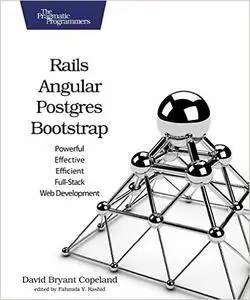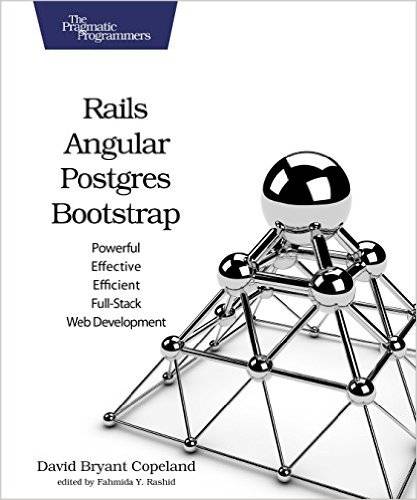David B. Copeland, "Rails, Angular, Postgres, and Bootstrap: Powerful, Effective, and Efficient Full-Stack Web Development"
English | ISBN: 1680501267 | 2016 | 240 pages | EPUB, MOBI, PDF | 25 MB
English | ISBN: 1680501267 | 2016 | 240 pages | EPUB, MOBI, PDF | 25 MB
As a Rails developer, you care about user experience and performance, but you also want simple and maintainable code. Achieve all that by embracing the full stack of web development, from styling with Twitter Bootstrap, building an interactive user interface with AngularJS, to storing data quickly and reliably in PostgreSQL. Take a holistic view of full-stack development to create usable, high-performing applications, and learn to use these technologies effectively in a Ruby on Rails environment.
Rails is a great tool for building web applications, but it's not the best at everything. Embrace the features built into your database. Learn how to use front-end frameworks. Seize the power of the application stack through AngularJS, Twitter Bootstrap, and PostgreSQL. When used together, these powerful and easy-to-use tools will open you to a new world of possibilities. In each chapter of this book, you'll learn how these technologies can work together inside a Rails app to deliver well-performing applications that offer great user experiences.
Create a usable and attractive login form using Twitter Bootstrap's styles, while ensuring the database table backing it is secure, using Postgres' check constraints. You'll see how creating an advanced Postgres index for a case-insensitive search can speed up your back-end–allowing you to create a highly dynamic user experience using AngularJS. You'll create reusable components that bring Twitter Bootstrap and Angular together, effectively use materialized views for caching within Postgres, and store unstructured data in an indexed JSON field. You'll get your front-end working with the Asset Pipeline, use Postgres' features from migrations, and write unit tests for all of it. All of this within Rails.
You'll gain the confidence to work at every level of the application stack, bringing the right solution to every problem.
What You Need:
You'll need the latest version of Ruby on Rails and have some experience with basic Rails concepts. You'll learn how to install Postgres on your computer or use a free version of it in the cloud. You should have a cursory understanding of JavaScript, CSS, and SQL, but by no means need to be an expert. You should install Postgres 9.4, Rails 4.2, and Ruby 2.2.



